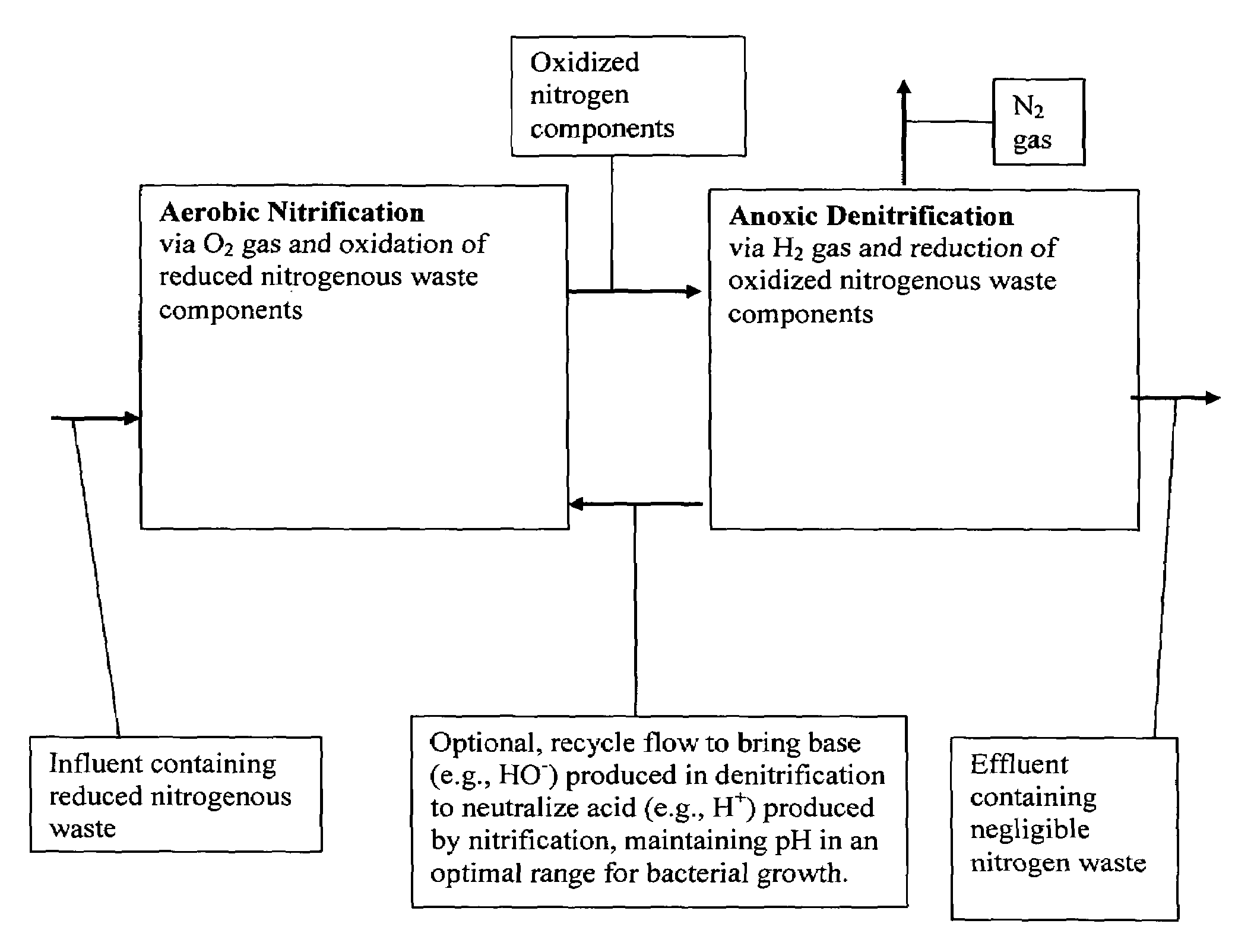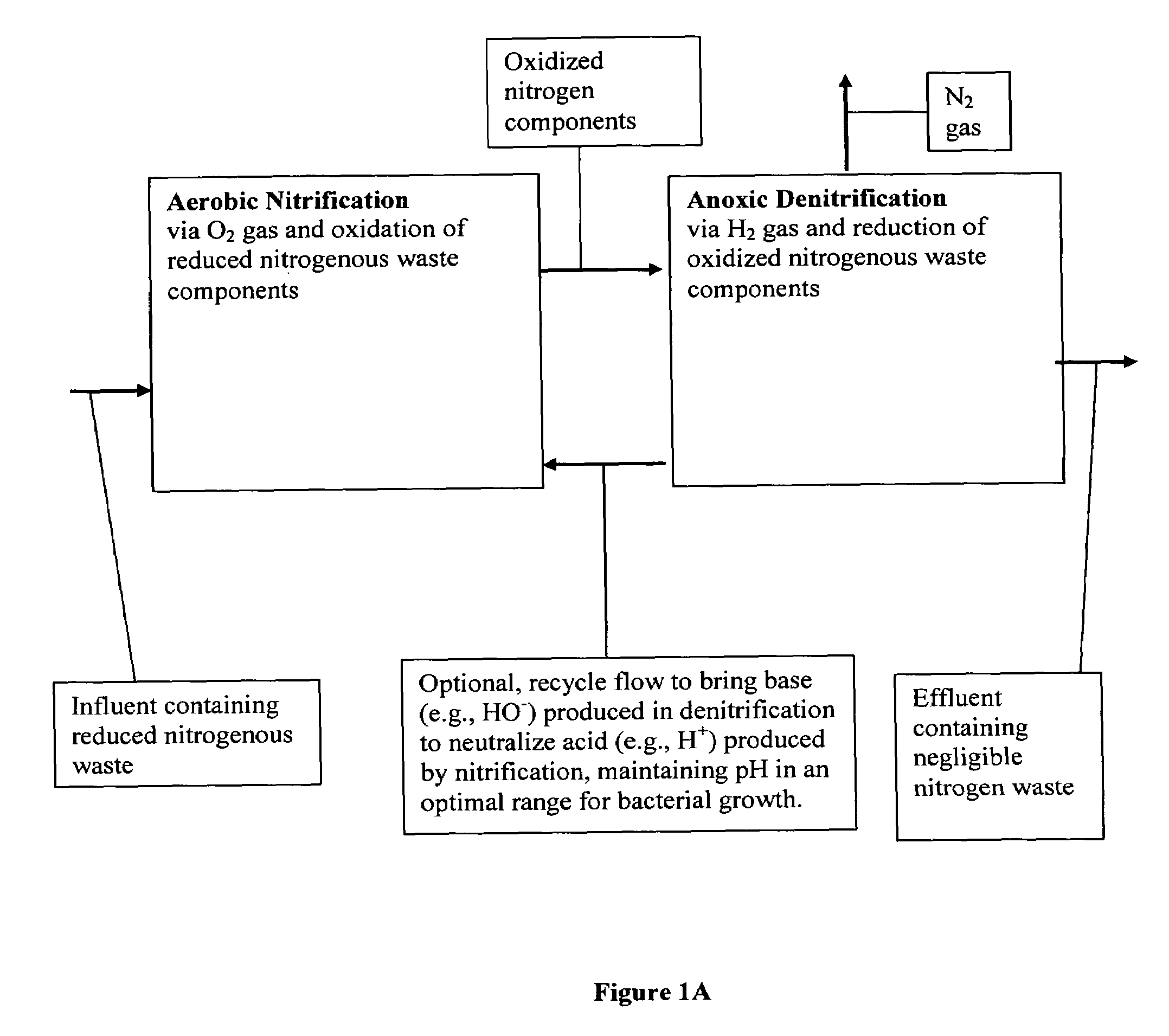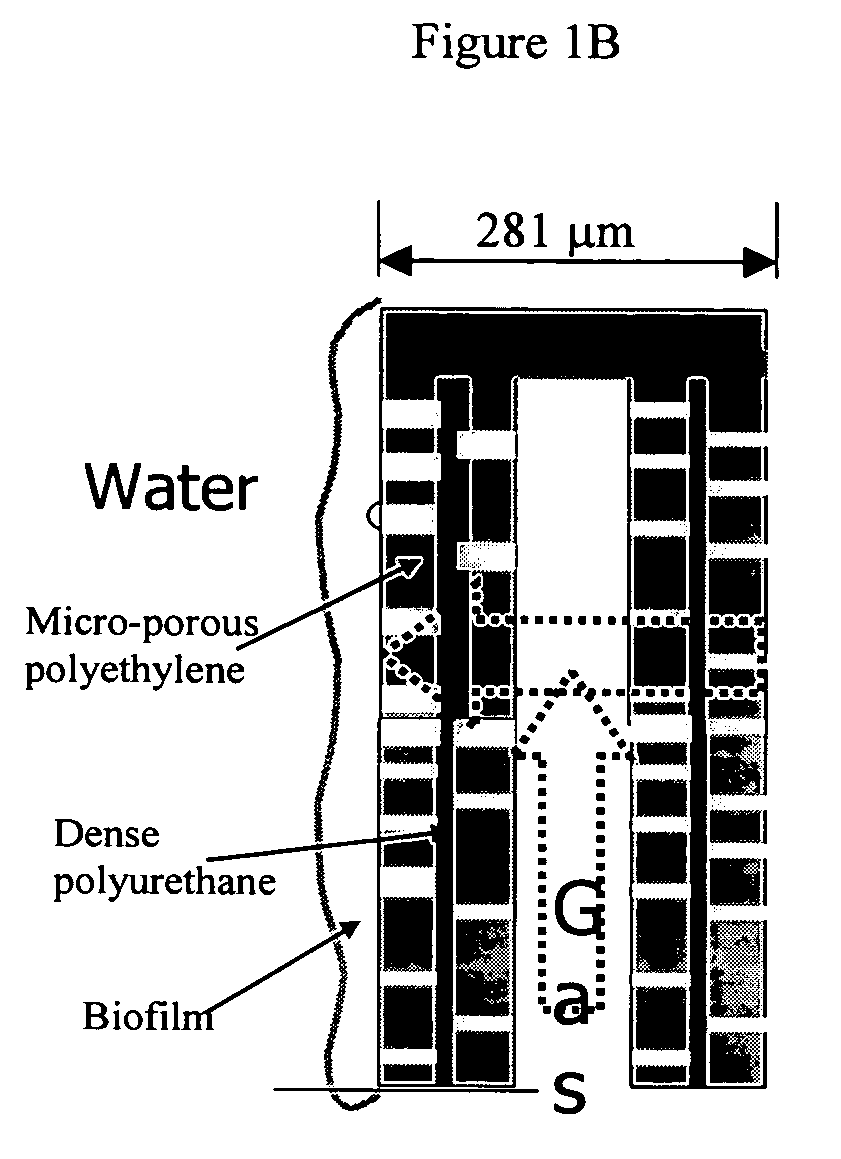Methods for total nitrogen removal from waste streams
a technology of waste stream and total nitrogen, which is applied in the direction of sustainable biological treatment, water/sewage treatment by oxidation, biological water/sewage treatment, etc., can solve the problems of increasing the amount of ammonium in the water body. , to achieve the effect of promoting the accumulation of denitrifying bacteria and reducing the nitrogenous componen
- Summary
- Abstract
- Description
- Claims
- Application Information
AI Technical Summary
Benefits of technology
Problems solved by technology
Method used
Image
Examples
example 1
Baseline N Removal
[0037]The first 100 hours of results in FIG. 3 show the baseline removal of N when the H2 pressure was 2.5 psi and the average O2 pressure was 2.5 psi. The concentrations of all N species were low: near to or less than 1 mgN / L for NH4+ and NO3−, with NO2− nearly zero. The total N concentration (i.e., the sum of NH4++NO3−+NO2− as N) always was less than 3 mgN / L and typically was less than 2 mgN / L. These results clearly demonstrate that the aerobic and anoxic MBfR system can achieve very low concentrations of all N species and total N.
example 2
Changing O2 Pressure
[0038]FIG. 4 also illustrates the general trend for nitrate and ammonium as the oxygen pressure was changed over time (at 110 to 280 hours). The ammonium concentration was greatly increased by a low oxygen pressure (1.25 psi). This was due to oxygen limitation of the nitrification reaction in the aerobic MBfR. On the other hand, the nitrate concentration was high when the oxygen pressure was increased (6 psi), presumably because dissolved oxygen carry over from the aerobic MBfR to the anoxic MBfR inhibited denitrification of NO3− to N2. The nitrite concentration was small and was largely unaffected by the gas pressures under the conditions utilized. The total nitrogen concentration mirrored the concentration of an N species that had an increased concentration due to the change in O2 pressure.
[0039]The results in FIG. 4 document the anticipated trends with O2 availability. Too little O2 availability slowed nitrification in the aerobic MBfR, leaving NH4+ unoxidized...
example 3
Changing H2 Pressure
[0040]FIG. 5 presents the results for variation of H2 pressure while keeping the O2 pressure at 3.6 psi. Varying the hydrogen pressure did not alter the concentrations as dramatically as did changing the oxygen pressure. The ammonium and nitrite concentrations were almost completely unaffected by the H2 pressure changes. On the other hand, the nitrate concentrations increased substantially when the H2 pressure was low (1.25 psi). The total-N concentration paralleled the NO3− concentration.
[0041]The results in FIG. 5 document the anticipated trends with H2 availability. Too little H2 availability slowed denitrification in the anoxic MBfR, leaving NO3− unreduced. However, increasing the H2 availability in the anoxic MBfR appeared not to have a negative impact on nitrification in the aerobic MBfR. This good result may have occurred because H2 has low water solubility, which precludes significant carry over to the aerobic MBfR. Again, the integrated aerobic and anoxi...
PUM
| Property | Measurement | Unit |
|---|---|---|
| concentrations | aaaaa | aaaaa |
| surface area | aaaaa | aaaaa |
| length | aaaaa | aaaaa |
Abstract
Description
Claims
Application Information
 Login to View More
Login to View More - R&D
- Intellectual Property
- Life Sciences
- Materials
- Tech Scout
- Unparalleled Data Quality
- Higher Quality Content
- 60% Fewer Hallucinations
Browse by: Latest US Patents, China's latest patents, Technical Efficacy Thesaurus, Application Domain, Technology Topic, Popular Technical Reports.
© 2025 PatSnap. All rights reserved.Legal|Privacy policy|Modern Slavery Act Transparency Statement|Sitemap|About US| Contact US: help@patsnap.com



